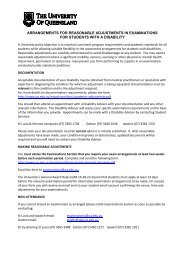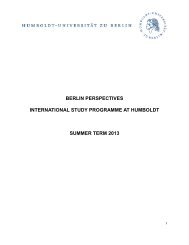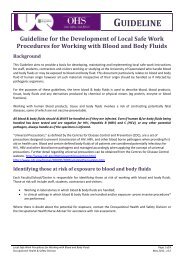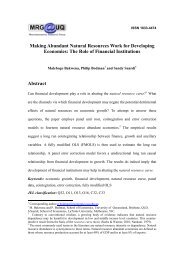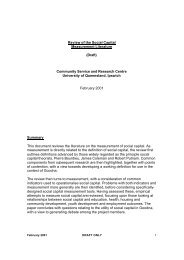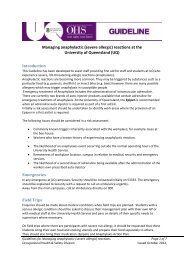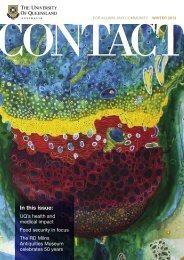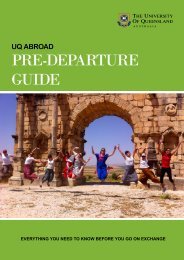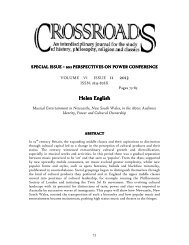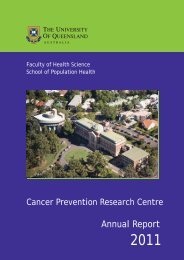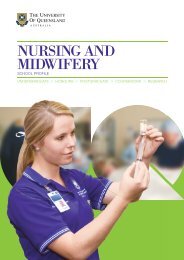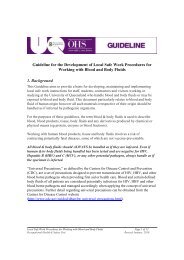Managing Traffic Incidents - University of Queensland
Managing Traffic Incidents - University of Queensland
Managing Traffic Incidents - University of Queensland
You also want an ePaper? Increase the reach of your titles
YUMPU automatically turns print PDFs into web optimized ePapers that Google loves.
The UK Multi-Modal Transport Studies<br />
nomic impacts and their distribution and may<br />
cover such aspects as:<br />
– The rationale for transport improvement;<br />
– Transport costs and benefits;<br />
– Total economic impacts; and<br />
– Pattern <strong>of</strong> gains and losses, in both economic<br />
activity and jobs.<br />
Overall, it appears that current appraisal <strong>of</strong><br />
transport and economic effects is not fully developed<br />
or applied (in the UK at least) and the<br />
key issue is to develop best practice in the use<br />
<strong>of</strong> transport/economic appraisal.<br />
Environment:<br />
– Noise<br />
– Local air quality<br />
– Climate change<br />
– Landscape<br />
– Townscape<br />
– Biodiversity<br />
– Heritage<br />
– Water resources<br />
– Other health impacts<br />
– Quality <strong>of</strong> journey<br />
Safety:<br />
– Accidents<br />
– Security<br />
Economy:<br />
– Economic efficiency <strong>of</strong><br />
the transport system<br />
– Reliability<br />
– Wider economic impacts<br />
Accessibility:<br />
– Access to the transport<br />
system<br />
– Option values<br />
– Severance<br />
Integration:<br />
– Transport interchange<br />
– Land-use policy<br />
– Other Government policy<br />
Appraisal and Concluding Remarks<br />
The approach to appraisal developed to meet the<br />
requirements <strong>of</strong> multi-modal studies, is a costbenefit<br />
analysis tool nested in a multi-criteria<br />
analysis tool.<br />
The box below provides a summary <strong>of</strong> the<br />
appraisal criteria.<br />
Other specific appraisal criteria include:<br />
– Distribution and equity<br />
– Affordability and financial sustainability<br />
– Practicality and public acceptability.<br />
Information is provided<br />
in the Guidance<br />
(GOMMMS)<br />
to assist in quantifying<br />
these criteria<br />
in a consistent way.<br />
In appraising alternative<br />
transport<br />
strategies there<br />
may be a need to<br />
take into account<br />
external issues (i.e.<br />
national and international<br />
transport<br />
and fiscal policy as<br />
well as general economic<br />
conditions).<br />
This could be<br />
achieved by undertaking<br />
sensitivity<br />
tests <strong>of</strong> a particular<br />
strategy against<br />
external influences.<br />
It is possible that<br />
transport policy<br />
strategies may not<br />
be the best way to<br />
tackle particular<br />
issues. Aspects, such as health or education<br />
policy, may also be significant factors (eg<br />
hospital and school locations).<br />
When examining costs and benefits a single<br />
benefit- cost ratio or net present value may<br />
conceal significant underlying issues, for example,<br />
the distributional effects <strong>of</strong> benefits<br />
and costs, and also when benefits and costs<br />
are likely to occur. A strategy that delivers<br />
benefits earlier than a strategy that delivers<br />
benefits only in the long term may be preferable.<br />
All these issues should be taken into account.<br />
The UK Government has also indicated that<br />
it will investigate the use <strong>of</strong> a cost effectiveness<br />
approach to transport evaluation. Cost<br />
effectiveness differs quite significantly from<br />
cost-benefit analysis because it measures the<br />
ratio <strong>of</strong> the number <strong>of</strong> objectives achieved by<br />
a strategy relative to the cost incurred in delivering<br />
them. This contrasts with cost-benefit<br />
analysis which measures "welfare benefits"<br />
irrespective <strong>of</strong> whether they have been established<br />
as a goal <strong>of</strong> the strategy. This indicates<br />
a need to address the true objectives <strong>of</strong> transport<br />
intervention.<br />
References<br />
1. Guidance on Developing Urban Transport<br />
Strategies, IHT, 1996<br />
2. Guidance on the Methodology for Multi<br />
Modal Studies, Volume 1, DETR, 1999<br />
3. Cohen T Multi-Modal Corridor Studies:<br />
Conclusions <strong>of</strong> Research On the Study<br />
Programme and Implications For appraisal,<br />
paper presented at the European<br />
Transport Conference, Cambridge, 2000<br />
4. Research into Multi Modal Studies, Steer<br />
Davies Gleave for Transport 2000, 2000<br />
5. Guidance on the Methodology for Multi<br />
Modal Studies, Volume 2, DETR, 1999<br />
6. Department <strong>of</strong> the Environment Transport<br />
and the Regions website, accessed on 16<br />
January 2001 www.roads.detr.gov.uk/<br />
roadnetwork/sactra/report99/summ.htm<br />
7. Standing Advisory Committee on Trunk<br />
Road Assessment, 1999: Transport and<br />
the Economy !<br />
Stephen Luke can be reached on:<br />
sluke@ppk.com.au<br />
14 DECEMBER 2001


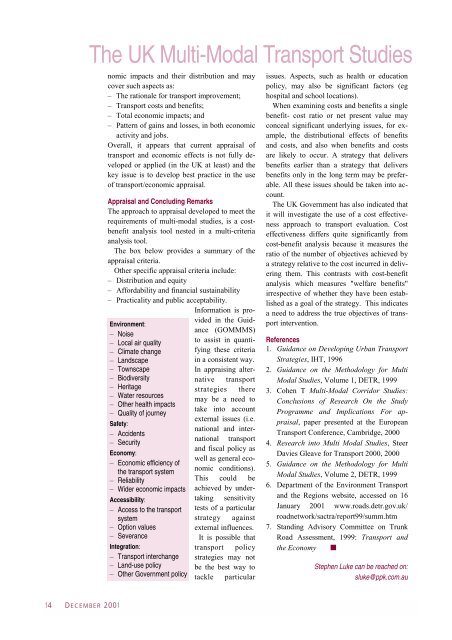

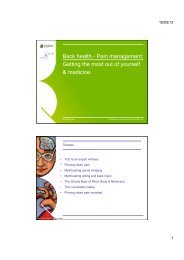
![Recycling [ PDF, 62KB ] - University of Queensland](https://img.yumpu.com/51805185/1/184x260/recycling-pdf-62kb-university-of-queensland.jpg?quality=85)
